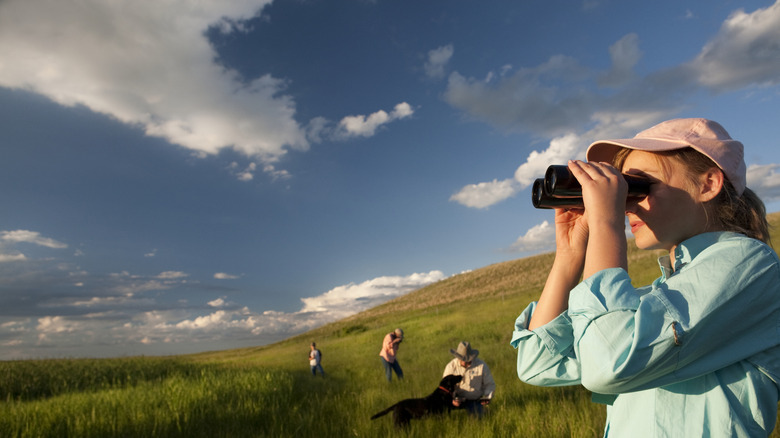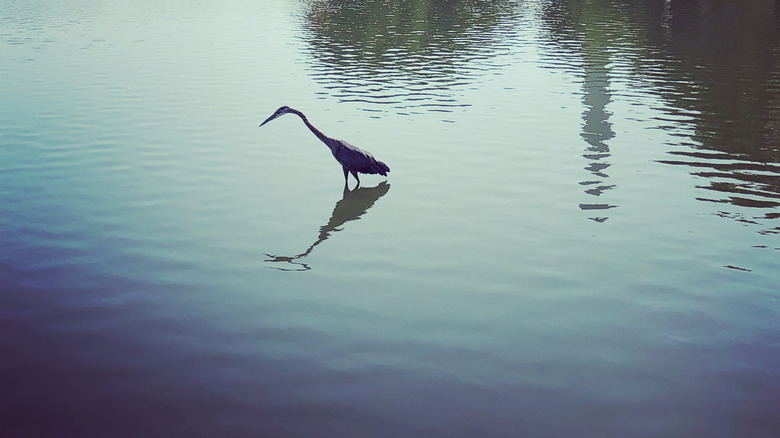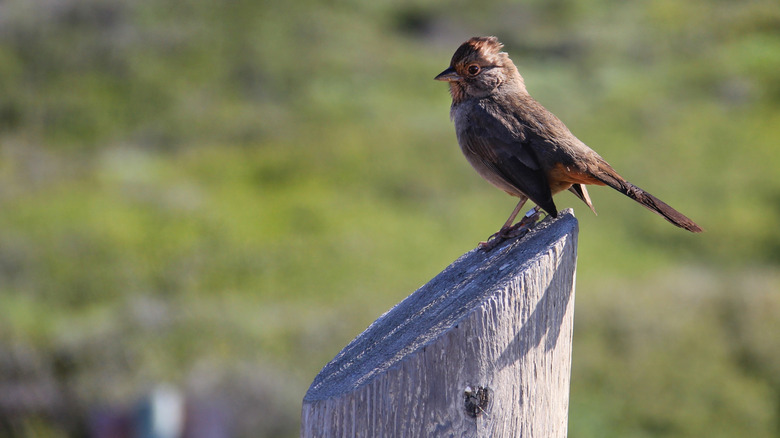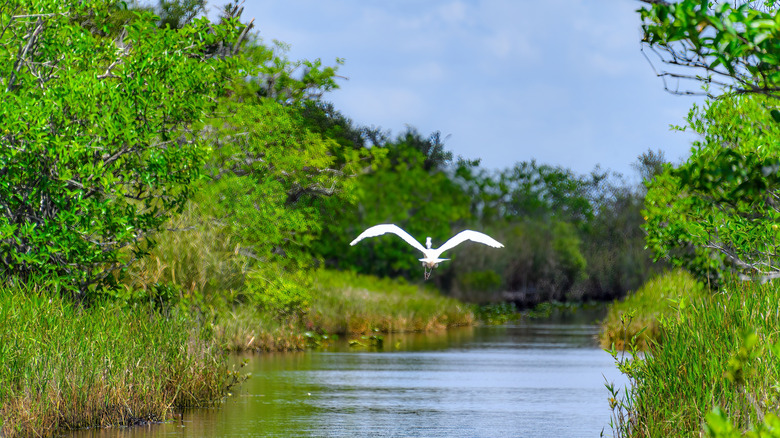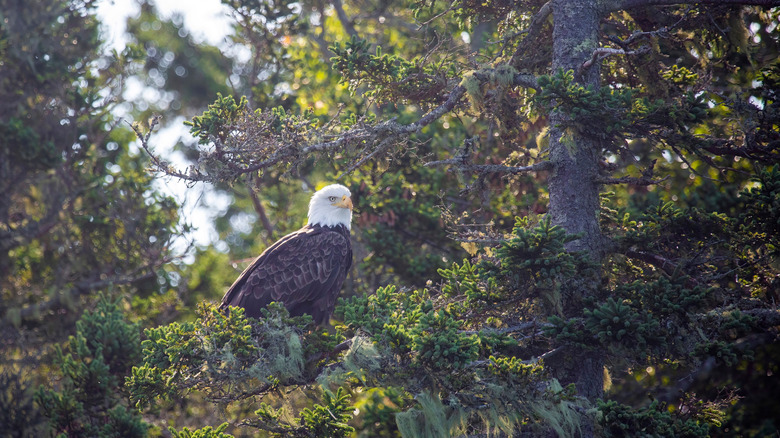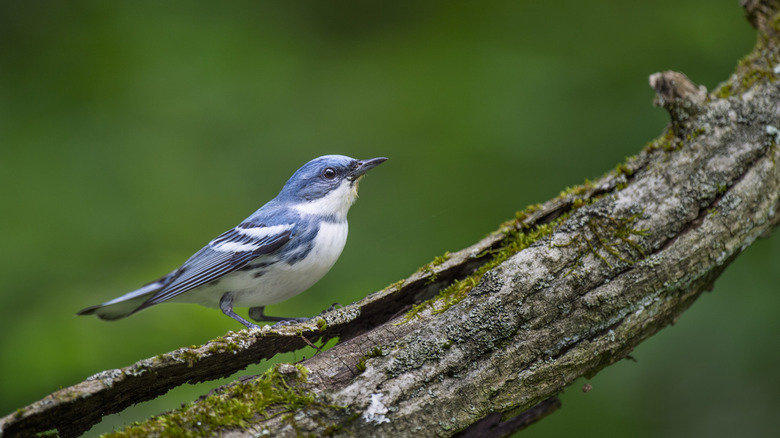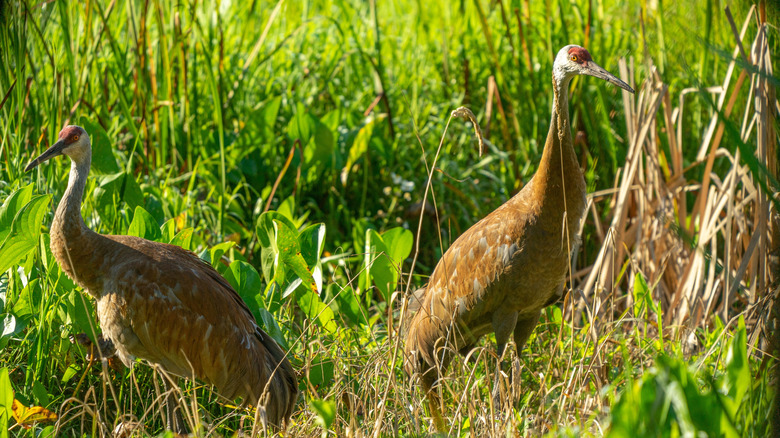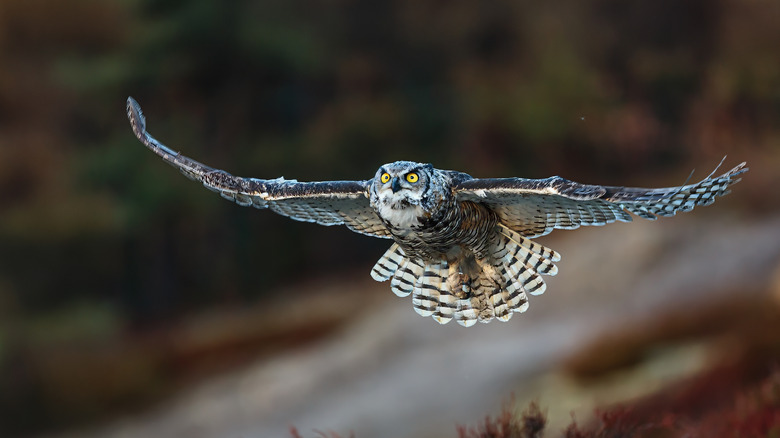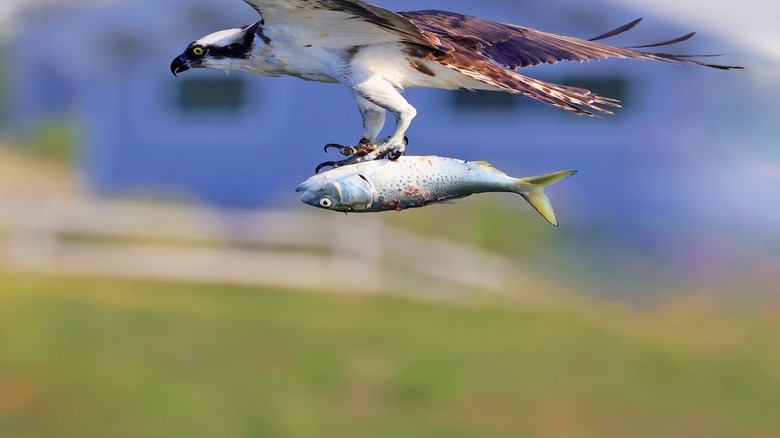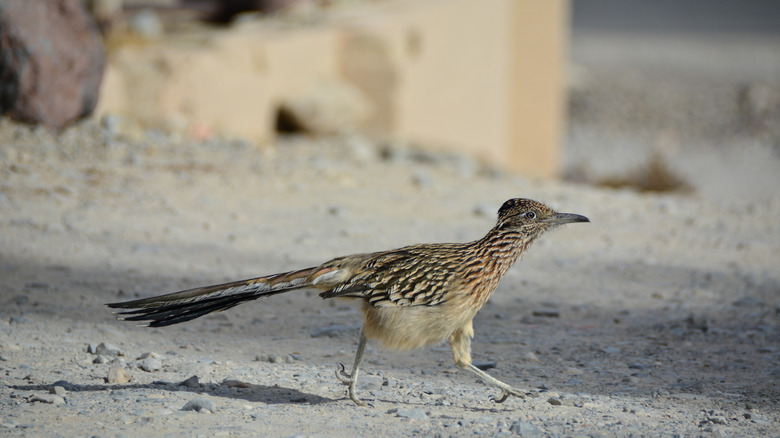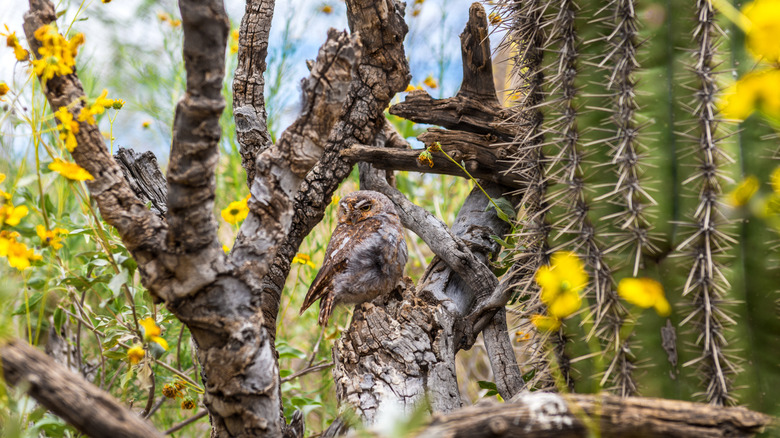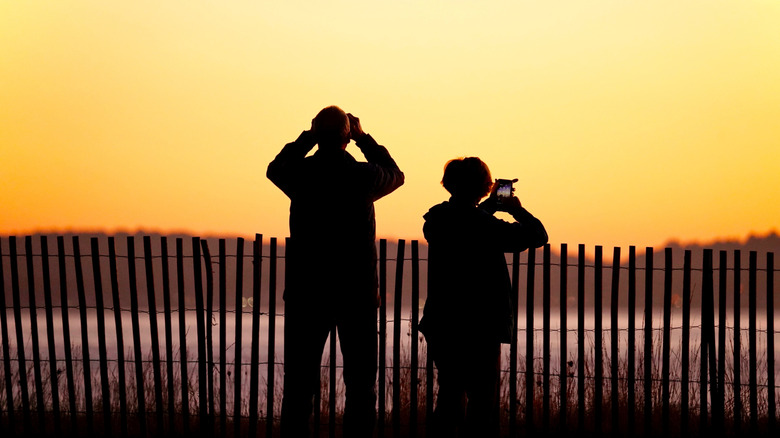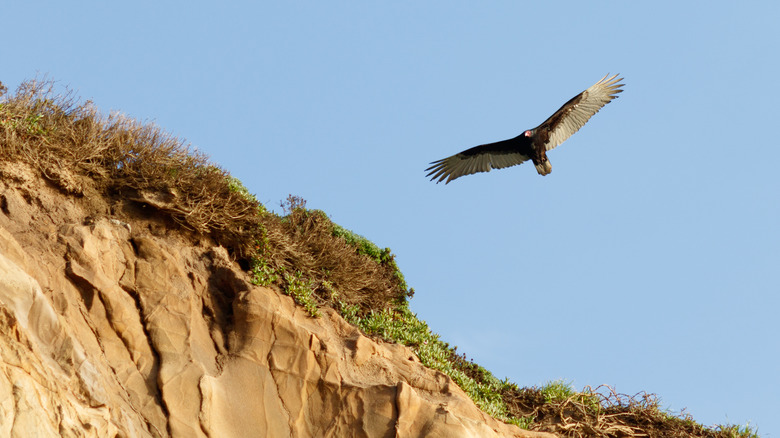The Best US National Parks To Visit If You Love Birding
We may receive a commission on purchases made from links.
Birding is one of those hobbies that can be picked up by anyone. Its pleasure lies in its simplicity. You can observe birds from the comfort of your back porch, learning which ones you never want to see at your feeders and which ones are actually beneficial to your garden. Here's the thing about birding, though — it can become addictive. Soon, you will want to leave the confines of your yard and start exploring bigger areas. And nowhere in the country is more suited for birding than our national parks.
America's national parks constitute several million acres of conserved natural landscapes. Iconic parks include places like Yellowstone, Yosemite, Acadia, and Sequoia, all of which are amazing places to visit if you love watching wildlife. When it comes to birding, however, you might be surprised to learn that you don't need to travel to the most far flung national parks to see numerous bird species.
While you can catch birds at every national park in America, the following 12 parks are, hands down, the best in terms of the sheer number of bird species you'll encounter. So, grab your binoculars and your guide book, and let's head out to the best national parks to visit if you love birding.
National Mall, Washington, D.C.
The National Mall in Washington, D.C. is a collection of green spaces and monuments maintained under the banner of the National Park Service. While it is not technically a park in its own right, the Mall offers so much history and nature in a very compact package. Most will go to see the monuments to Jefferson, Lincoln, and Washington, or visit the numerous museums of the Smithsonian. But birders will head straight for the banks of the Potomac to catch sight of some amazing species.
The western edge of the National Mall runs alongside the Potomac River, which divides Virginia from Washington. The river creates a welcoming ecosystem for over 200 different species of birds. Many of these are common waterfowl like geese and ducks, but if you plan to visit the Mall in the spring or fall, your chances of seeing more species increases dramatically.
This is due to the yearly migration patterns that bring hundreds of birds back to their nesting grounds for mating season. During this time, the Mall will be brimming with starlings, osprey, red-tailed hawks, and, fittingly, bald eagles. Thankfully, the Mall is free and open to the public, so gaining access to its birding areas is incredibly easy.
Cabrillo National Monument, California
Like the National Mall in Washington, Cabrillo National Monument near San Diego in California is a lot of nature packed into a small setting. In fact, there are more animal species inhabiting Cabrillo than the park has acres. At a small 160 acres, this pint-sized National Park offers far more bang for its buck in terms of the sheer amount of bird species you can see when visiting.
The awe inspiring number of Pacific bird species you will likely be able to view here is thanks to the park's location on the Point Loma peninsula. The coastal scrub rush, rocky outcroppings, and tidal pools create a diverse ecosystem that welcomes many native coastal birds, as well as migratory birds who make their nests in the spring and summer.
One species to watch out for is the black-vented shearwater. These small birds are part of the puffin family, and have a very distinctive hoot that makes them fairly easy to locate. Other unique species to seek out are native California quail, scrub-jays, mockingbirds, orange-crowned warblers, osprey, egrets, and the small, but mighty, American kestrel.
Everglades National Park, Florida
The entire state of Florida is home to some of the most colorful bird species in the United States. Yet, in terms of sheer quantity of species to be observed, there is nowhere better than Everglades National Park. Set in the sweltering, humid, subtropical swampy environment of southern Florida, the Everglades make the perfect environment for the almost 300 different species of birds that call it home.
The shallow depth and warmth of the waters of the Everglades, along with the iconic tall grasses, create the kind of shelter that allows the yearly avian spectacle known as supercolonies to take place. There can sometimes be so many birds flying that the sky can become dark. The birds whizzing around in the air include kites, nighthawks, loons, cuckoos, flycatchers, tropical kingbirds, parakeets, and budgerigars.
The wading species of the Everglades are also numerous and colorful, and include white ibis, great blue heron, American flamingos, white pelicans, and Roseate spoonbills. It is important to note that the Everglades are part of the unique south Florida ecosystem that allows both crocodiles and alligators to live together in harmony. Birds are an important part of their diet, so birders should always proceed with caution when exploring this national park.
Acadia National Park, Maine
As New England's only official national park, Acadia is one of Maine's most visited locations. The craggy coastline, gently rolling carriage roads, immense pine forests, and dramatic sunrises make it a national park that should definitely be on your bucket list. For those birders who love northern coastal species, Acadia is a veritable feast. With nearly 50,000 acres of tidal pools, rocky cliffs, inlets, ponds, streams, and marshes, the bird species in Acadia may not be as colorful as those in the Everglades, but they are certainly as numerous.
Acadia makes for a particularly special place for northeast birders because it is one of the few places in the region where you can see Atlantic puffins. These quirky, popular birds migrate down from Canada during the spring and summer months. A simple ferry ride around one of the small, rocky islands along Acadia's storied coast will get you within binocular shots of large colonies of puffins hunting for fish and laying their eggs.
Back on the mainland, views from the coast yield sightings of bald eagles, osprey, hawks, and the common loon. In the marshes of Acadia, buffleheads and grouse can be sighted even into the wintertime. Speaking of winter, snowy owls are known to come and make their nests in the rocky hills of the park. Warm layers and a good deal of patience could yield a sighting of these highly elusive birds.
Chesapeake and Ohio Canal National Historical Park, Maryland, D.C., and West Virginia
Chesapeake and Ohio Canal National Historical Park gives birders the chance to see one of the most colorful birds around: the cerulean warbler. Most of us only know about the existence of this shade of blue thanks to the iconic scene from "The Devil Wears Prada", so if you remember that scene you will have a decent idea of the color of this warbler's feathers. There is a very short window to see this colorful bird, as it only mates during the summer months before migrating all the way down to South America for the winter.
The hardwood forecasted landscape of this historic park makes the perfect environment for the cerulean warbler. Fellow song birds — including cardinals, Carolina warblers, and tufted titmice — make their nests on the branches and hollows of the pine, maple, oak, and birch common in this area. The additional marshes and riverscapes create a home for waterfowl like wood ducks, and wading species like herons.
This national historical park is also an excellent place for those birders who love to sight birds of prey. Thanks to the abundant fish in the river, bald eagles are commonly seen making nests along the banks. Turkey vultures are also common, as are red-tailed hawks. All told, this is perhaps one of, if not the best locations to see eastern American birds.
Indiana Dunes National Park, Indiana
The state of Indiana is not immediately synonymous with having one of the best sand dune landscapes in the entire country. However, along the shores of Lake Michigan, Indiana Dunes National Park is home to around 285 different species of birds and is one of the most breathtaking places to camp in the entire country. Tall grasses, scrub brush, and rolling hills of sand come together to create a truly unique ecosystem that birds absolutely love.
Fans of pipers and plovers will rejoice in being able to see these small, quick-footed little birds playing with the lake's tides as they search for the insects and vegetation that make up their diet. In the Great Marsh along the banks of the lake, wetland birds like herons, snow geese, mallard ducks, and bitterns make homes in the reeds and tall grasses.
Meanwhile, in the surrounding woodlands, woodpeckers, jays, cardinals, and other common backyard and song birds make nests and mate. Lake Michigan is also a confluence for many migratory species, such as jaegers, gulls, and terns. Hawks can be spotted fishing over the lake, and the cry of the common loon can be heard echoing off the water.
Carlsbad Caverns National Park, New Mexico
It can be easy to forget that desert landscapes are actually abundant with wildlife. Though they may seem like barren wastelands, the amount of flora, fauna, insects, reptiles, and other wildlife actually make deserts among the most diverse ecosystems on the globe. However, when it comes to birding, there are specific natural requirements that need to be met. Nowhere is the special confluence of desert and woods better than at Carlsbad Caverns National Park.
Set on the southern edge of the Guadalupe Mountains in New Mexico, the caverns offer a unique refuge from the surrounding arid desert. The water and shelter available above the caverns themselves create a haven for a diverse assortment of birds, ranging from desert natives, to visiting migratory visitors.
Common desert locals to the caverns include black and turkey vultures, vermilion flycatchers, rock wrens, cactus wrens, woodpeckers, great horned owls and several types of sparrows. Migratory visitors usually come in the winter months to escape the frigid temperatures of their mating grounds. These include gray vireos and several types of buntings. The cacti, rocky outcroppings, and mountainside forest create the shelter in which all of these birds make their homes, whether permanent or temporary.
Cape Cod National Seashore, Massachusetts
The National Seashore is one of those places that you can only experience on Cape Cod. There is no other beach like it in the world. Sure, some are prettier, more sandy, or larger, but, as someone who vacationed down the Cape for the majority of his youth, I believe the National Seashore is still the best example where the power of the ocean meets the rugged beauty of the New England shore. It also happens to be the best place in all of New England to view coastal bird life.
A combination of tidal swamps, marshland, wooded areas, scrub brush, rocks, beach sands, and dunes create a prime location for some familiar East Coast avian friends. Pipers and plovers nest in the grasses along the beach, and are comfortable enough around people that their frequent interactions with beachgoing families create moments of joy for young children. The arched wingspan of the native osprey is a common sight for anyone looking skyward along the National Seashore. To see one dive for a fish is tremendous fun.
Other coastal bird species include roseate terns, American oystercatchers, whimbrels, and red knots. It may be difficult to view these birds on crowded beaches on the southern half of the seashore. Thankfully, there are plenty of trails, sanctuaries, and less-crowded beaches that not only make for great birding, but truly scenic views too.
Death Valley National Park, California
Death Valley is not only a desert, it is the single hottest place on earth, and the driest in all of North America. A record setting 134 degrees Fahrenheit air temperature was recorded in Death Valley back in 1913. Over a century later and that record has yet to be broken. As such, one would think that nothing could live in such an inhospitable and arid place. Well, one would be wrong.
Death Valley, despite its name, is teeming with life, a lot of which happens to be avian. Roadrunners, hawks, falcons, meadowlarks, hummingbirds, and coots either migrate during specific seasons, or live in the cooler boreal terrain of the nearby Sierra Nevada Mountains.
The amount of species available to see will make any birder want to brave the heat of this vast California desert. Note, however, that this heat is one of the reasons Death Valley is frequently listed among the most dangerous National Parks. Sun protection, like Coppertone's Pure and Simple Sunscreen Lotion of SPF 50 and hydration are needed when exploring this wilderness, which can be incredibly unforgiving.
Big Bend National Park, Texas
While the majority of Big Bend National Park is home to craggy cliffs and desert cacti, the section of the park that comprises the northern shore of the Rio Grande creates a very hospitable environment for numerous types of birds. You'll note that the theme of this list has been that the best birding locations are along coastlines, near rivers or lakes, or in marshes. Birds need water to survive, and will therefore be drawn to these areas to mate and nest.
Over 300 species of songbirds, waterfowl, and birds of prey call Big Bend their home. One resident that is of particular note is the elf owl. These small birds make their nests inside of cacti or other hollowed out nests left behind by woodpeckers. They're nocturnal, so your only chance at seeing these fun little guys is at dusk or night, which is when they leave their nests to catch the insects and small rodents they feast on.
The types of birds you see is largely dependent on where in the park you choose to look. In the desert areas you'll see roadrunners and flycatchers. In the more wooded mountain passes you'll see orioles and jays. Along the riverbanks you'll see herons, cardinals, and hawks. So, no matter where you are in the park, your chances of catching sight of a bird are pretty high.
Gateway National Recreation Area, New Jersey/New York
As its name suggests, Gateway National Recreation Area is the literal gateway many immigrants and settlers first come to when they came to America. Stretched out across much of New York Harbor and along the Jersey shore, the recreation area includes historic landmarks, former military installations, and plenty of beaches, marshes, and woods to make it the second best National Park in the country to see bird life. Some 350 species, both native and migratory, call Gateway their home.
Thanks to its abundant coastline, the majority of the birds you will see when you visit Gateway are going to be coastal species. Killdeer, plovers, oystercatchers, osprey, and woodcocks are all common natives. Migratory visitors include hummingbirds, buffleheads, and northern pintails.
The recreation area is especially great for raptor viewing. Osprey, peregrine falcons, and bald eagles are all native to the northeast, and will commonly fly over wooded and coastal areas in search of food. You'll catch these mostly on the Fort Tilden side of the Gateway. Cooper's hawks can also be spotted from the Sandy Hook area on the New Jersey side.
Point Reyes National Seashore, California
There have been many great locations on this list, but there is no better national park for birding than Point Reyes in California. This park takes the cake as the most diverse national park in terms of the sheer number of different species you can see here. Over 400 native and migratory species call Point Reyes their home, and all range in size, shape, and color.
Thanks to a combination of wetlands, Pacific coastline, woods, and year-round mild temperatures, Point Reyes is the perfect spot for birds to come visiting. Species you can see include several different types of loons, woodpeckers, albatross, shearwaters, cormorants, storks, hawks, kites, eagles, owls, roadrunners, cuckoos, doves, plovers, swifts, larks, flycatchers, and so many more! If you love birding, this is the national park to visit.
Keep an eye out for tufted puffins at the lighthouse rocks in the spring and summer, when they sometimes appear. The Estero Trail, which was once the area of a pine farm, will likely present you with chances to spot both great-horned and long-eared owls. Meanwhile spending time around the Limantour area will reward you with a near-countless variety of species, both on land and around the shore.
